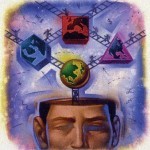Nowadays, it’s possible to screen a person’s body for early symptoms of disease and various medical conditions. There are two main types of screening machines and processes: magnetic resonance imaging (MRI) and computed tomographic (CT).
While both of these screening processes are effective, MRI has some key advantages that can make it more useful in certain situations.
Differences between MRI and CT
When someone receives a whole body scan, their entire body is looked at from head to toe. This screening process can detect problems like masses, inflammation, cancer, and overall abnormalities. A whole body screening can be the difference between life and death, and it often helps to detect a problem early on.
A CT scan uses x-rays to take pictures of the body at various angles and positions to put together a detailed image of a body. The final image is a 3D picture that can clearly show any abnormalities inside. Before a CT scan, patients are often asked to either swallow a contrast agent or have it injected through an IV to help show more contrast on the final picture. Doctors may choose to use a CT scan to get a good look at the skeletal system, gastrointestinal tract, chest, or head.
Rather than using x-rays, an MRI scan uses magnetic fields and radio frequency in order to capture a detailed image of the inside of a body. An MRI machine is able to line up a patient’s hydrogen atoms, which creates enough energy needed to complete the final image. MRI screenings can be used on any part of the body, but are commonly used on the head, chest, abdomen, and pelvic area. A full body MRI scan for cancer is common because the detailed images can pinpoint the location of cancer as well as whether or not it’s spreading.
Benefits of choosing MRI
While both CT scans and MRI scans are considered safe, there is one major problem with CT scans: radiation exposure. Despite CT scans being fairly quick, patients are still exposed to radiation because x-rays are used to capture the images. While a short-term exposure to this radiation has no effect, there is always the possibility of complications later on.
The low radiation level created from a CT scan can impact people in different ways. Older individuals may be impacted more and those who have to have multiple scans in a short amount of time may be impacted more as well. The increased risk of cancer is quite minor, but doctors need to be mindful of the overall health condition of patients before scheduling a CT scan.
Another benefit of choosing MRI over CT is that patients don’t have to consume or inject a contrasting agent. While this contrasting agent is safe and most people have no problem with it, there is always the risk of a potential reaction and decreased comfort if someone doesn’t like having an IV.
And lastly, perhaps the biggest benefit of choosing MRI over CT is that MRI images are much more detailed. The whole point of a whole body scan is to capture every tiny detail throughout the body. Because MRI machines actually use the patient’s body composition to capture and image, it’s going to be more detailed. A detailed image is crucial to allow doctors to see even the tiniest abnormality.
Whole body screenings are an important part of the medical world. Without them, doctors wouldn’t be able to provide quick and effective diagnoses. And MRI screenings can provide doctors with the detailed images they need while keeping patients safe and comfortable.
Related Posts












